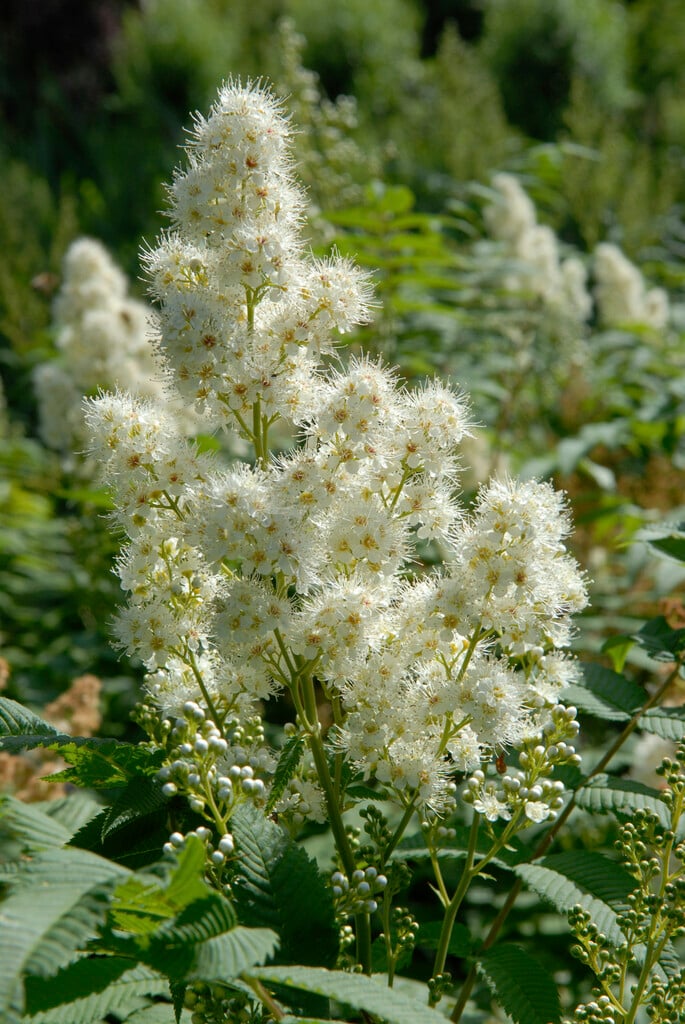Sorbaria tomentosa var. angustifolia
narrow-leaved Himalayan sorbaria
A large, suckering, deciduous shrub with 40cm long leaves made up of 10 or more pairs of slender, opposite leaflets. In summer it produces large, conical heads of white flowers on red shoots

Buy this plant
Size
Ultimate height
2.5–4 metresTime to ultimate height
5–10 yearsUltimate spread
2.5–4 metresGrowing conditions
Moisture
Moist but well–drainedpH
Alkaline, NeutralColour & scent
| Stem | Flower | Foliage | Fruit | |
| Spring | Green | |||
|---|---|---|---|---|
| Summer | White | Green | ||
| Autumn | Green | |||
| Winter |
Position
- Full sun
- Partial shade
Aspect
East–facing or South–facing or West–facing
Exposure
Exposed or Sheltered Hardiness
H5Botanical details
- Family
- Rosaceae
- Native to GB / Ireland
- No
- Foliage
- Deciduous
- Habit
- Suckering
- Genus
Sorbaria are large, deciduous suckering shrubs with attractive pinnate leaves and small, white, spiraea-like flowers borne in large terminal panicles in summer
- Name status
Correct
- Plant range
- Afghanistan Kashmir
How to grow
Cultivation
Grow in moderately fertile, moist but well-drained soil in full sun to partial shade. Remove excess suckers to restrict spread. Has the potential to become a nuisance if not managed well
Propagation
Propagate by sowing seed in containers in a cold frame in autumn, or by semi-riope cuttings or removal of rooted suckers
Suggested planting locations and garden types
- Cottage and informal garden
- Flower borders and beds
- Wall side borders
Pruning
Pruning group 2 or pruning group 6; sucker removal in winter
Pests
Generally pest-free
Diseases
Generally disease-free
Get involved
The Royal Horticultural Society is the UK’s leading gardening charity. We aim to enrich everyone’s life through plants, and make the UK a greener and more beautiful place.